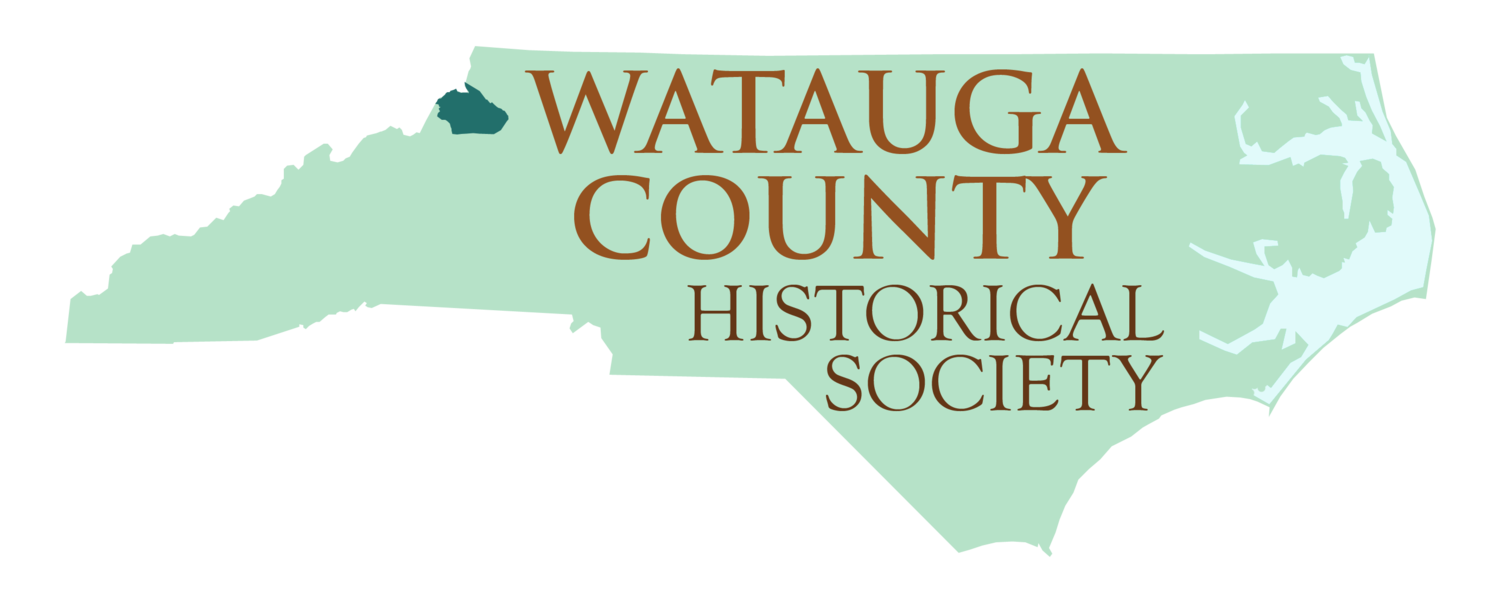Derek Burke, Digital Watauga Intern
Since its formation in the late 1980s, the Downtown Boone Development Association (DBDA) has worked to revitalize downtown and accommodate a thriving central business district in the Boone community.[1] The color slide images shown in the forthcoming DBDA Collection capture fragments of daily life in downtown Boone during the mid-1990s. These images reflect the efforts of they Downtown Boone Development Association as it evaluated the town’s architecture and the functionality of its public spaces. Items in this collection depict the architectural and economic character of downtown Boone, showing building facades, parking lots, directional street signs, pedestrians, and automobile traffic. Also seen are the familiar buildings that house contemporary downtown businesses like the present-day Boone Saloon on West King Street and the current ECRS location on Howard Street. This intriguing series of snapshots showing Boone’s recent past evokes curiosity regarding what the town has been before and what it might become in the future.
Seen here in the 1990s is the present-day Boone Saloon Building, originally known as the Carolina Pharmacy #2 Building. Image courtesy of the Downtown Boone Development Association Collection (Dow-Boo-1-001), Digital Watauga Project.
Originally known as the Hamby and Winkler Building (1937), this building on West King Street housed the Our Daily Bread Delicatessen in the 1990s, its present tenant today. Image courtesy of the Downtown Boone Development Association Collection (Dow-Boo-1-010), Digital Watauga Project.
In 1993 the Town of Boone began participating in the NC Main Street Program, seeking to preserve Boone’s distinctive historic and cultural identity while stimulating economic development. These images were part of a broader assessment of how well the town reflected the points outlined in the Downtown Boone Vision Statement, which emphasized efficiency regarding parking and traffic, architectural aesthetic, public safety, and preservation of Boone’s continuity as a mountain town with a distinctive landscape and local history.[2] The vision statement articulated the comments and concerns expressed during a 1993 public meeting attended by over 150 community members.[3] To view these images is to see like a developer. The photographer’s eye is drawn to that which is perceived as needing improvement as well as that which is thought to show the more exemplary and preservation-worthy aspects of downtown Boone. The initiative of the DBDA is to create an authentic downtown atmosphere that is made one of a kind by the presence of Boone’s historical architecture and the Blue Ridge Mountains. The desired outcome is economic vitality and to open the town to commercial possibility.
The former W. R. Winkler Warehouse/Masonic Hall (1949) is seen in this image as the Heilig-Meyers Warehouse during the 1990s. Most folks might think this building is gone, but in fact its walls served as the structure for the present Watauga County Administration Building. Image courtesy of the Downtown Boone Development Association Collection (Dow-Boo-1-007), Digital Watauga Project.
The W. R. Winkler Building (1927) endured the indignity of having its brick painted and an ill-suited, cable-hung awning applied during the middle period of its architectural history. Seen here in the 1990s, the building originally had a double-entrance configuration. Mast General Store later reconfigured the two entrances into one, removed the paint from the brick, and removed the cable-hung awning. Image courtesy of the Downtown Boone Development Association Collection (Dow-Boo-1-058), Digital Watauga Project.
By the 1920s downtown Boone already had a thriving commercial district consisting of several businesses, including Qualls Hardware, the Watauga County Bank, the Critcher Hotel, and the New Edison car dealership.[4] While most of downtown Boone’s first businesses disappeared long ago, Boone Drug and Farmer’s Hardware have withstood the test of time and remain in business today. On the one hand, this points to the timeless necessity of tools and medicine.[5] On the other hand, it speaks to the ability of these businesses to read the town and respond to the dynamism of its local culture. Several of the images in this collection picture familiar architectural forms housing unrecognizable contents and businesses. It’s an uncanny reminder that places are alive, that a town is an ongoing process animated, in part, by the collective spirit of the people who live there. Furthermore, these images show that local history is constantly unfolding before our eyes as decisions are made, demands are met, and cultural landscapes are shaped. This collection is a terrific one to visit and ponder the interplay between the town of Boone’s architectural materiality, its institutions of development, and its collective, ever-changing, socioeconomic sense of self. Keep an eye out for the Downtown Boone Development Association Collection, which will appear soon on Digital Watauga’s website.
Visible at left in the 1990s is the building on the north side of Howard Street originally known as the Boone Tire and Bargain Store Warehouse (1944), followed to the east by the building originally known as the Baker-Commack Hosiery Mills Building (1944). The latter building is presently home to The Local restaurant and features a massive wooden porch structure on its south elevation. Image courtesy of the Downtown Boone Development Association Collection (Dow-Boo-1-070), Digital Watauga Project.
[1] https://downtownboonenc.com/about/
[2] https://downtownboonenc.com/about/
[3] Ibid.
[4] Warmuth, Images of America: Boone, 22-23.
[5] Ibid.
